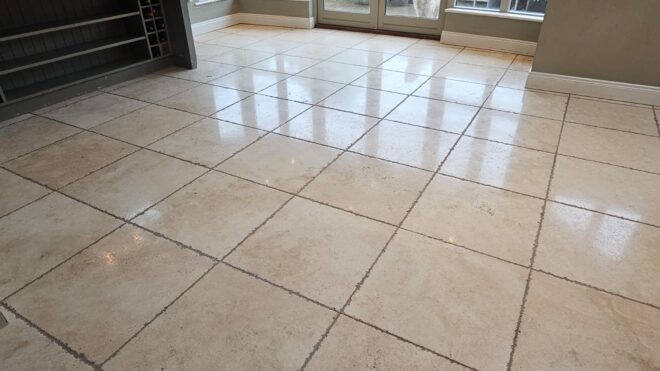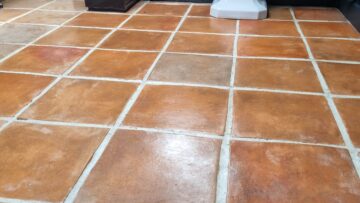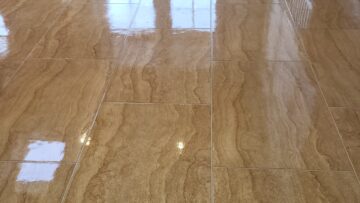Find Out More Information About Marble Floor Polishing Strategies
Marble is a timeless and luxurious material, prized for its elegance and natural beauty. For centuries, it has been the flooring of choice for high-end residential and commercial properties, a testament to its unique blend of sophistication and durability. Unlike other flooring options, marble is a natural stone, characterized by a crystalline texture and distinct vein-like patterns that make each piece unique. This is a significant difference from manufactured or artificial floors, which are mass-produced and lack the individuality and organic feel of natural stone. While synthetic floors can be a more budget-friendly option, they cannot replicate the natural brilliance and depth of real marble. However, the beauty of a marble floor is not static; it requires careful maintenance to retain its luster and can be restored to its original brilliance through a series of professional processes. This article will serve as a comprehensive guide to understanding, cleaning, polishing, and maintaining your marble floors, ensuring they remain a source of pride and elegance for years to come.
What Is A Marble Floor?
A marble floor is a beautiful testament to the earth’s natural processes, formed from limestone under intense heat and pressure over millions of years. This geological transformation results in a durable yet porous stone that is then cut and polished to create the exquisite tiles we use for flooring. The key difference between a natural marble floor and an artificial floor lies in its composition and character. Artificial or cultured marble is a man-made product, typically a mixture of marble dust, resins, and pigments. While it is more resistant to staining and etching than natural marble, it lacks the unique, crystalline structure and unpredictable veining that defines real stone. Natural marble, on the other hand, is a soft stone that can etch and scratch easily, but this is also what makes it so special. These imperfections tell a story, and with proper care, they can be erased. A significant advantage of natural marble is its ability to be restored through a process of grinding and polishing. This means that unlike artificial floors which must be replaced when damaged, a natural marble floor can be refinished multiple times, effectively giving it a new life and making it a truly long-term investment. This restorative capability is a major reason why professional marble floor cleaning and polishing services are so sought after, particularly in a city like Dublin, where preserving the character of historic properties is highly valued.
How To Clean Marble Floors
Proper cleaning is the foundation of any effective marble floor maintenance program. Due to its porous and delicate nature, marble requires a different approach than other flooring materials. The number one rule is to avoid harsh, acidic, or abrasive cleaners, such as vinegar or lemon juice, as these will etch the surface, creating dull spots and permanent damage. Instead, always opt for a pH-neutral cleaner specifically designed for natural stone. For daily cleaning, a product like Faber Neugel is an excellent choice. This concentrated, pH-neutral gel cleaner is formulated to gently lift dirt and grime without harming the stone’s delicate composition. Its unique formula also nourishes the surface over time, enhancing the natural tones and building a protective layer that resists dirt and dust. For regular cleaning, a diluted solution of Faber Neugel with water is sufficient, applied with a flat mop to avoid oversoaking the floor. For more stubborn stains and heavy-duty cleaning projects, a professional-grade product like Faber Cottosolv is recommended. This highly concentrated, alkaline-based degreaser is designed to strip away tough residues, waxes, and stubborn organic or synthetic polymers. It is particularly effective for deep-seated stains and in situations where the floor has been neglected. Before applying any heavy-duty product, it is crucial to test it on a small, inconspicuous area to ensure compatibility. Following the cleaning, a thorough rinse with clean water is essential to remove any product residue, and the floor should be dried with a soft cloth to prevent water marks. Consistent cleaning with the right products is a vital step in maintaining the pristine condition and aesthetic appeal of your marble floor.
Marble Floor Grinding
Marble floor grinding is a crucial step in the restoration process, particularly when the floor has suffered from significant wear, deep scratches, or uneven tiles. Over time, heavy foot traffic, dropped objects, and improper cleaning can lead to a surface that is dull, scuffed, and marred by noticeable imperfections. Grinding involves the use of heavy-duty machinery with abrasive diamond pads to meticulously remove a thin, microscopic layer from the floor’s surface. This process effectively sands down the stone, eliminating deep scratches, lippage (uneven tile edges), and other surface irregularities, and preparing the floor for the subsequent polishing stages. The choice of diamond pads is paramount to the success of this process. The Diafil Discolux range of diamond pads is widely regarded as an industry leader for their exceptional durability and cost-effectiveness. These diamond pads come in various grits, from coarse to super-fine, allowing for a phased approach to grinding that ensures a smooth and consistent finish. The process starts with a coarse grit to flatten the surface and remove major damage, and then progresses to finer grits to smooth out the stone and refine the surface. Grinding a marble floor is not a task for a novice; it requires professional skill and specialized equipment to achieve a uniform result without damaging the stone. When done correctly by experienced marble floor grinding contractors in Dublin, this process can revitalize a floor that seems beyond repair, bringing it back to a pristine condition. The ability to grind and restore a marble floor is a key benefit, allowing homeowners and businesses to avoid the high cost and disruption of a full floor replacement.
Marble Floor Polishing
Marble floor polishing is the art of transforming a sanded or dull surface into a brilliant, reflective, or even a natural, matte finish. This is the stage where the true beauty of the marble is revealed. There are several methods for achieving a high-quality polish, each with its own advantages. One common and highly effective method is the use of diamond pads, such as those from the Diafil Discolux range. By progressing through a series of increasingly finer grits, these pads create a mechanical polish by gradually smoothing the stone’s surface to a microscopic level. For floors that require an even deeper, more vitreous shine, a wet polishing powder like Faber A3 Yellow is the ideal solution. This high-performing powder reacts with the calcium carbonate in the marble to create a lasting, deep gloss that is highly resistant to foot traffic and staining. This chemical reaction results in a much more durable and long-lasting polish than a simple surface coating. For those who prefer a more natural, honed finish rather than a high-gloss sheen, a specific polishing process can be tailored to achieve that desired look. The versatility of marble allows for a range of finishes, from a mirror-like shine to a sophisticated, matte appearance. Regardless of the desired finish, the polishing process is essential for enhancing the aesthetic and protecting the stone. It’s also important to remember that neglecting to polish the marble regularly will inevitably affect the level of gloss, and using the wrong cleaning products will affect the sheen and can reverse the effects of a professional polish. Therefore, once polished, it’s crucial to maintain the floor with the correct products and practices.
Marble Floor Sealing
Sealing a marble floor is a non-negotiable step in the restoration and maintenance process. Since marble is a porous stone, it is highly susceptible to staining and the penetration of dirt and liquids. A sealer acts as a protective barrier, preventing spills from soaking into the stone and giving you time to clean them up before they can cause permanent damage. It is a common misconception that a sealer makes the floor non-porous; rather, it makes the stone resistant to absorption. A high-quality penetrating sealer is absorbed into the pores of the marble, where it creates an invisible barrier that repels water and oil-based stains. This is different from a topical sealer or coating that sits on the surface and can peel or scratch over time. When selecting a sealer, it is crucial to choose one specifically formulated for natural stone. Professional marble floor polishing contractors will typically apply a premium, breathable sealer that protects against stains while preserving the stone’s natural appearance and allowing it to “breathe.” This process is essential for extending the life of your marble and for making daily maintenance much easier and safer. A simple test to determine if your marble floor needs to be resealed is to sprinkle a few drops of water on the surface. If the water is quickly absorbed and the stone darkens, it’s a clear sign that it’s time to reseal. The general recommendation is to buff and polish all marble floors at least once per year and to reseal them as needed, typically every 1-2 years depending on the level of foot traffic and usage.
Marble Floor Maintenance
Maintaining a marble floor is an ongoing commitment, but with the right practices, it can be a relatively simple and rewarding task. Regular maintenance is key to preserving the floor’s luster and preventing the need for more intensive and costly restoration work. The first and most important step in daily care is to remove dirt and grit. These small particles act like sandpaper underfoot, causing microscopic scratches that will dull the surface over time. Regular dry sweeping with a soft, clean dust mop is highly recommended, as is the use of entry mats at all entrances. When wet-cleaning, a flat mop is the ideal tool as it prevents oversoaking the floor, which can lead to water marks and other issues. It is crucial to use a pH-neutral cleaner like Faber Neugel for all routine cleaning to avoid etching the surface. Another critical point is to immediately blot up any spills, especially acidic ones like wine, citrus juices, or coffee. Never wipe or rub the spill, as this can spread the liquid and push the stain deeper into the pores. Finally, avoid dragging heavy items across your marble floor, especially after it has been newly polished. The pressure and friction can easily scratch the delicate surface and undo the meticulous work of polishing. By adhering to these simple but effective maintenance tips and scheduling annual professional marble floor polishing and buffing, you can ensure your floor retains its brilliant shine and timeless elegance for many years to come.
FAQ
What is the difference between natural and cultured marble? Natural marble is a porous, metamorphic rock formed over millions of years, known for its unique veining and crystalline structure. Cultured marble is a man-made composite of marble dust, resins, and pigments, which is non-porous and more resistant to stains but lacks the unique character of natural stone. The key difference is that natural marble can be restored through grinding and polishing, while cultured marble cannot.
How often should I have my marble floor professionally polished? For residential floors, it is recommended to have your marble professionally polished and buffed at least once per year to maintain its gloss and protect the surface. In high-traffic commercial settings, more frequent polishing may be necessary. Ignoring to polish the marble regularly will affect the level of gloss and make the floor more susceptible to damage.
What is the best way to clean my marble floors? The best way to clean your marble floor is to use a pH-neutral cleaner specifically designed for natural stone, like Faber Neugel. For daily cleaning, a diluted solution with water and a flat mop is ideal. Avoid acidic and abrasive cleaners at all costs, as they will etch and damage the surface.
Can I fix scratches on my marble floor myself? Minor, superficial scratches can sometimes be buffed out with a specialized polishing paste. However, for deep scratches or a floor with widespread damage, a professional grinding and polishing service is required. Attempting to fix deep scratches without the right tools and expertise can lead to irreversible damage.
Why is it so important to seal a marble floor? Sealing a marble floor is essential because marble is a porous stone that easily absorbs liquids and can become stained. A high-quality penetrating sealer creates an invisible, protective barrier within the stone’s pores, giving you a crucial window of time to clean up spills before they can cause permanent stains. Resealing is a critical part of a comprehensive marble floor maintenance plan



